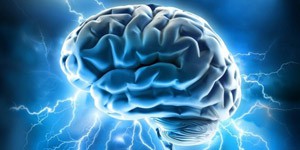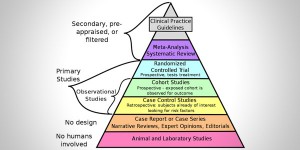By Moisés García Arencibia

Doctor of Biochemistry and Molecular Biology, he has worked mainly on the neuroprotective potential of cannabinoids. He is currently a Professor of Cell Biology at the University of La Laguna.
Decisions about cellular fate are key for correctly maintaining the cell environment and for the survival of tissues and organisms. The endocannabinoid system is an important regulator for determining the fate of brain cells under normal and pathological conditions.
During embryonic development, the various other cells that make up an organism are formed from a single cell (the zygote). A stem cell gives rise to two daughter cells that undergo different processes that include migration to the area of the body where they are needed, proliferation or differentiation in a characteristic way (neurons, red blood cells, skin cells, etc.) until reaching their cellular fate where they carry out their specific functions. Other cells, on the other hand, are not necessary and die in a controlled manner. This also occurs during the development of the individual and during tissue regeneration. To maintain correct cell and tissue function, this process must be strongly regulated, otherwise it can lead to uncontrolled cell growth, which is what happens in cancer, or unwanted cellular death, as occurs in diseases such as Parkinson's and Alzheimer's.
The factors that regulate cellular fate include endogenous factors such as the cellular microenvironment, epigenetic factors and remote or external signals. These factors include the signalling pathways associated with the endocannabinoid system, especially relevant in the development of the nervous system and in the adult brain, where they can promote the survival of the different "non-transformed" brain cells (neurons, astrocytes, oligodendrocytes, etc.) or may have a pro- or anti-tumour effect on cancer cells ("transformed").
Effect of cannabinoids on cerebral development
The endocannabinoid system is present from the early stages of embryonic development. In these stages, the CB1 cannabinoid receptor plays a fundamental role in regulating normal growth of the embryo. On the other hand, the CB2 receptor seems to be responsible for controlling the population of stem cells, which are those undifferentiated cells with the capacity to self-renew and with the potential to become different types of cells.
In recent years, more and more evidence has been gathered about the role played by the endocannabinoid system in developing the immature brain. The brain's stem cells (called neural progenitors) can produce the two main endocannabinoids, anandamide (AEA) and 2-arachidonoylglycerol (2-AG). The CB1 receptor is expressed from the early stages of embryonic development. The levels of this receptor are low and increase during neuronal differentiation. In contrast, the CB2 receptor, which is normally absent in neurons, is present in the neural progenitors. Both receptors play a role in regulating the cellular fate of these neuronal progenitors. Both CB1 and CB2 activation promotes proliferation and increases the number of available neural progenitors. The CB1 receptor also regulates the differentiation of these progenitors in neurons and in glial cells (astrocytes and oligodendrocytes) depending on the cell environment. The CB2 receptor does not seem to have such a relevant role in this neural differentiation, unlike what occurs in other progenitor cells such as those of the immune system or bone.
In the adult brain there is also formation of new neurons (neurogenesis) in certain areas called neurogenic niches. This is important in the case of brain injuries, in which this neurogenesis is activated and the new neurons are integrated into the affected areas. A malfunction of this process, however, can lead to poor connections between neurons that can cause epilepsy. Thus, endocannabinoid system regulation could have therapeutic uses in adult neurogenesis after brain damage. It has also been seen that neurogenesis in the hippocampus, an area of the brain related to memory, plays an important role in emotional states, and that neurogenesis stimulation can be useful for treating depression. In this regard, cannabidiol, a phytocannabinoid with no psychoactive potential, has demonstrated its anxiolytic capacity by increasing hippocampal neurogenesis in laboratory mice.
The effect of cannabinoids in neuroprotection
As mentioned above, the neurons that die could be replaced by new neurons, although the manner of acting on this mechanism is still far from our understanding. That is why it is very important to protect the original neurons to ensure the proper functioning of the brain. The endocannabinoid system has demonstrated its neuroprotective potential in non-transformed cells in vivo and in vitro, to the point that it is considered by some researchers as a defence system of the brain against inflammatory, excitotoxic, infectious, traumatic and oxidative damage. This endocannabinoid system's response can be imitated by administering compounds that interact with this system, with beneficial results.
Although this neuroprotective potential has long been known, new mechanisms by which the endocannabinoid system can protect brain cells have recently been described. For example, it has been shown that endogenous cannabinoids can protect neurons against ischemic damage by activating the CB1 receptor in astroglia. The presence of cannabinoid receptors has also been detected in intracellular compartments, such as mitochondria, which offers a new therapeutic target against mitochondrial dysfunction and oxidative stress, which would be relevant in different neurological pathologies such as Alzheimer's, Parkinson's, Huntington's, amyotrophic lateral sclerosis, stroke, and neuropsychiatric disorders such as depression, bipolar disorder and schizophrenia.
Finally, it has recently been seen that the endocannabinoid system can stimulate autophagy in both transformed and non-transformed cells, which may have different effects in each cell type. Autophagy (which means "eating oneself") is a process by which double membrane structures enclose part of the interior of the cell and direct it to degradation. It is an evolutionarily conserved process that plays an important role in maintaining homeostasis, the correct functioning of the cell. The autophagy acts when the cell does not receive enough nutrients, when there are infections by pathogens and eliminating old proteins, protein aggregates and damaged organelles. Failures in autophagy have been associated with numerous diseases. It has been shown that activation of the CB2 receptor in a multiple sclerosis mouse model stimulates autophagy and reduces the pathogenesis of the disease.
Effect of cannabinoids on the cellular fate of tumour cells
The effect that cannabinoids have on the fate of tumour cells is open to debate in the scientific community, since it has been seen that cannabinoid system activation can have an anticarcinogenic effect and also an effect on tumour generation and progression.
There are numerous ways in which cannabinoids can cause the death of tumour cells. The most numerous are those that cause programmed cell death, known as apoptosis, which can be caused, among other mechanisms, by the activation of cannabinoid receptors CB1 and/or CB2 by activating the vanilloid receptor TRPV1, by activating PPARγ receptors, by activating the GPR55 receptor (considered by some to be the "CB3 receptor") or even by receptor-independent mechanisms. Cannabinoids can also activate autophagy in tumour cells but, unlike what happens in non-transformed cells, where this activation was neuroprotective, cancer cells cause their death.
On the other hand, there are authors who have seen that there is an increase in the levels of endocannabinoids and their receptors that is associated with greater tumour aggressiveness. The CB2 receptor has also been described as a proto-oncogene, with a role in developing different tumours and whose inactivation has an inhibitory effect on tumour growth.
Conclusion
The signalling mediated by the endocannabinoid system controls brain cell proliferation, differentiation and death, which has important consequences for neural development and for brain repair. Maintaining the plasticity and function of brain cells mediated by the endocannabinoid system provides an opportunity for the use of neurorepair strategies based on endogenous stem cells and the different mechanisms by which cannabinoids provide neuroprotection, making them very interesting tools for its potential application in different neurodegenerative diseases. On the other hand, the endocannabinoid system's effect on cell death makes it a promising therapeutic target for the treatment of different brain tumours, although even more studies are needed to avoid the pro-tumoral effect that has been seen in certain models, especially when the CB2 receiver is activated.


